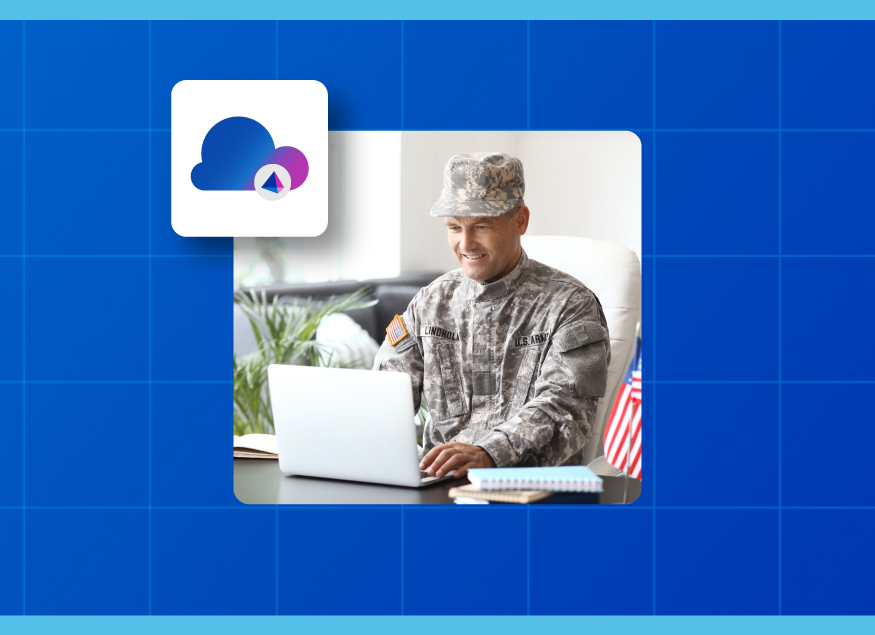On September 3, 2024, The Department of Defense (DoD) released Instruction 8520.04, titled “Access Management for DoD Information Systems,” that serves as a foundational policy guiding the secure and efficient management of access to DoD information systems. The instruction mandates protocols for managing access across various environments, including military networks and systems used by both person entities (PEs) and non-person entities (NPEs) such as devices, applications, and automated processes. At the core of this policy is the principle of identity governance, which is essential for ensuring that access to sensitive systems and data is granted, monitored, and revoked based on verified identity attributes and defined security policies.
In the dynamic cybersecurity landscape, the concept of identity governance refers to the frameworks and processes that manage the lifecycle of digital identities. This includes the creation, management, and deletion of user accounts as well as the provisioning and de-provisioning of access rights based on a combination of user attributes, roles, and organizational policies. Identity governance is critical for compliance with the DoD’s Zero Trust Architecture, as outlined in the DoD Zero Trust Strategy. It emphasizes least privilege, continuous verification, and dynamic access control, all of which are key components of DoD Instruction 8520.04.
The policy serves as maturation of the departments ICAM initiatives over the past few years and highlights some key concepts that need to be adopted across the departments ecosystem. Here are some key examples of how identity governance aligns with and strengthens this policy:
1. Access Control and Provisioning
One of the primary elements of identity governance is the effective provisioning and de-provisioning of access. This aligns with Section 4 of DoD Instruction 8520.04, which mandates that access to systems be carefully controlled through explicit or dynamic mechanisms. Explicit access involves manually provisioning access rights to specific users, which must be meticulously documented and approved by system or resource owners. On the other hand, dynamic access relies on real-time attribute verification to grant or deny access based on the most current information available, such as the user’s role, location, or security clearance.

Identity governance solutions play a crucial role in these processes by automating provisioning and de-provisioning based on predefined policies. When a user’s role changes or they leave the organization, governance systems automatically adjust access rights, ensuring compliance with de-provisioning requirements. This automatic adjustment helps prevent orphaned accounts—user accounts that are no longer needed or authorized—which can pose serious security risks if left unmanaged.
2. Authoritative Attribute Services
DoD Instruction 8520.04 emphasizes the importance of authoritative attribute services (AAS) in maintaining the accuracy, integrity, and security of identity attributes used in dynamic access decisions. Identity governance frameworks are designed to integrate with these authoritative services, ensuring that identity attributes such as security clearance levels, employment status, and role-based entitlements are accurate and up-to-date. This enables the DoD to enforce dynamic access control based on real-time identity data.
For example, a DoD system that relies on dynamic access might check a user’s current security clearance, job function, or location in real time before granting access to a sensitive file or system, or assign a critical role. These checks are enabled by robust identity governance systems that pull data from authoritative attribute services and apply organizational policies to ensure that access is only granted to those who are fully authorized and meet the predefined criteria.
3. Least Privilege and Separation of Duties (SoD)
The concept of least privilege—granting users the minimum level of access necessary to perform their duties—is another foundational principle of both identity governance and DoD Instruction 8520.04. In Section 4.2 of the instruction, system and IT resource owners are required to document and implement explicit access policies that adhere to least privilege standards. Furthermore, systems must implement SoD controls to prevent a single user from having conflicting roles, such as both creating and approving financial transactions.
Identity governance frameworks are uniquely equipped to manage SoD by automating the assignment of roles and enforcing policies that prevent users from being granted conflicting privileges. Governance solutions continuously monitor user access and provide alerts if SoD violations occur. By integrating these capabilities with the DoD’s access management protocols, identity governance helps ensure that users cannot escalate their privileges or circumvent access controls, thereby reducing the risk of insider threats and security breaches.
4. Continuous Auditing and Compliance
Continuous auditing and monitoring of user access is a critical requirement under DoD Instruction 8520.04, particularly for privileged users. Identity governance solutions enable DoD components to implement robust audit trails that track every access request, change in privileges, and system interaction. This is particularly important for IT privileged users—those with elevated access to critical systems and sensitive data—who require enhanced monitoring to detect and respond to suspicious activity.
Through the use of identity governance tools, DoD organizations can enforce periodic access reviews, as mandated by the instruction, to ensure that users only have the access they need and that privileged access is justified and properly documented. These reviews are automated and documented within governance systems, reducing the manual workload on administrators and enhancing the overall security posture by ensuring compliance with regulatory requirements.
5. Integration with Zero Trust Architecture
The DoD Zero Trust Strategy emphasizes the need for continuous verification of users and devices as they request access to systems and data, rather than assuming trust based on their presence inside the network perimeter. Identity governance systems are integral to the implementation of Zero Trust principles within the DoD, as they enable real-time verification of identity attributes and ensure that access is granted only after all conditions are met.
For instance, an identity governance system might check not only a user’s identity but also their security status, the network they are using, and the time of the access request before enabling access to sensitive data. This multi-layered approach to access control ensures that even if one security measure is compromised, others are in place to protect critical resources.
In Conclusion
Identity governance is a foundational element of the DoD’s efforts to secure access to information systems under DoD Instruction 8520.04. By providing a structured approach to managing digital identities, provisioning access, enforcing least privilege and separation of duties, and maintaining continuous auditing and compliance, identity governance systems enable the DoD to meet the stringent security requirements laid out in the instruction. Furthermore, identity governance is a critical enabler of the DoD’s shift toward a Zero Trust Architecture, ensuring that access to sensitive systems is dynamically controlled based on real-time identity attributes and organizational policies.
As cyber threats continue to evolve, the integration of identity governance with access management protocols like those found in DoD Instruction 8520.04 will be crucial in maintaining the security and integrity of the DoD’s information systems and the data they protect.
For a details of how SailPoint Identity Security supports the departments current ICAM and Zero Trust initiatives, and specifically how the capabilities of the platform align with the requirements of the policy, please download the report here.







